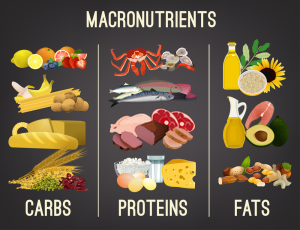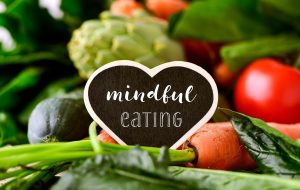Basics of Balanced Nutrition
In a world inundated with fad diets and conflicting nutrition advice, finding the path to optimal health can feel like navigating a maze blindfolded. However, at the core of every effective and sustainable approach to wellness lies one fundamental principle: balanced eating. Crafting a Building a Healthy Plate isn’t just about counting calories or following the latest food trends; it’s about nourishing your body with the nutrients it needs to thrive. In this comprehensive guide, we’ll delve into the art of balanced eating, exploring how to construct a plate that promotes overall health and vitality. Explore More About Health Issues and Their Solutions (How To Improve You Health in 30 Days)
The Importance of Macronutrients 🥦🍗🥑
To Building a Healthy Plate, it’s essential to understand the role of macronutrients: proteins, carbohydrates, and fats. These nutrients serve as the building blocks of a healthy diet, each playing a unique role in supporting bodily functions and promoting overall well-being.
Proteins 🍗
Proteins are often hailed as the body’s building blocks, and for good reason. They play a crucial role in muscle repair and growth, support immune function, and help regulate hormones. Incorporating lean proteins such as chicken, fish, tofu, and legumes into your meals can provide the essential amino acids your body needs to thrive.
Carbohydrates 🍞
Despite their vilification in some dietary circles, carbohydrates are a vital source of energy for the body. Opt for complex carbohydrates like whole grains, fruits, and vegetables, which provide sustained energy release and essential vitamins and minerals. Avoid highly processed refined carbohydrates such as white bread and sugary snacks, which can lead to energy crashes and nutrient deficiencies.
Fats 🥑
Contrary to popular belief, not all fats are created equal. While saturated and trans fats should be limited due to their adverse effects on heart health so that’s why Building a Healthy Plate, unsaturated fats such as those found in nuts, seeds, and avocados can actually promote cardiovascular health and cognitive function. Incorporating a variety of healthy fats into your diet can help keep your heart happy and your brain sharp.

The Role of Micronutrients 🥗🥒
In addition to macronutrients, micronutrients such as vitamins and minerals play a crucial role in maintaining optimal health. These micronutrients act as cofactors in enzymatic reactions, support immune function, and contribute to everything from bone health to skin integrity. By consuming a diverse array of fruits, vegetables, whole grains, and lean proteins Building a Healthy Plate, you can ensure that your body receives the essential micronutrients it needs to function at its best.
Building a Balanced Plate: The Power of Portion Control
While understanding the macronutrient composition of your meals is important, portion control is equally crucial when it comes to building a balanced plate. Even the healthiest foods can contribute to weight gain and metabolic imbalances if consumed in excess. By following these simple guidelines, you can ensure that your plate is both nutritious and appropriately portioned:
Fill Half Your Plate with Vegetables 🥦🥕
Vegetables are nutritional powerhouses, packed with fiber, vitamins, and minerals. Aim to fill at least half of your plate with a colorful array of non-starchy vegetables such as leafy greens, peppers, broccoli, and carrots Building a Healthy Plate. Not only will this help you feel full and satisfied, but it will also provide your body with the essential nutrients it needs to thrive.
Quarter Your Plate with Lean Proteins 🍗🥩
Proteins are essential for muscle repair, hormone regulation, and overall satiety. Aim to fill one-quarter of your plate with lean protein sources such as chicken, fish, tofu, or legumes. These protein-rich foods will help keep you feeling full and satisfied while providing the building blocks your body needs to function optimally.
Reserve the Remaining Quarter for Whole Grains or Starchy Vegetables 🍚🌽
Carbohydrates are your body’s primary source of energy, so it’s important to include them in your meals. However, not all carbohydrates are created equal. Opt for whole grains such as brown rice, quinoa, or whole wheat bread, or starchy vegetables like sweet potatoes or corn. These complex carbohydrates provide sustained energy release and essential nutrients, helping you feel energized and focused throughout the day.
Incorporate Healthy Fats in Moderation 🥑🌰
While fats often get a bad rap, they’re an essential component of a balanced diet. However, it’s important to choose the right types of fats and consume them in moderation. Incorporate healthy fats such as olive oil, avocado, nuts, and seeds into your meals, but be mindful of portion sizes. These fats can add flavor and satiety to your meals while providing essential fatty acids and fat-soluble vitamins.

The Role of Mindful Eating in Balanced Nutrition
In addition to focusing on the composition of your plate, practicing mindful eating can further enhance the benefits of balanced nutrition. Mindful eating involves paying attention to your body’s hunger and fullness cues, savoring each bite, and cultivating a deeper connection with your food. By slowing down and savoring your meals, you can enhance digestion, prevent overeating, and foster a healthier relationship with food.
Tips for Practicing Mindful Eating
- Eat at Regular Time Intervals: Establish a routine of eating at regular times throughout the day to maintain stable blood sugar levels and prevent excessive hunger.
- Eat Before You Get Too Hungry: Listen to your body’s hunger cues and eat before you become overly hungry to prevent overeating and poor food choices.
- Eat Breakfast: Start your day off right by fueling your body with a nutritious breakfast, setting the tone for balanced eating and Building a Healthy Plate throughout the day.
- Enjoy Your Food: Take the time to savor and enjoy each bite, appreciating the flavors, textures, and aromas of your meal.
- Get Enough Sleep: Prioritize quality sleep, as insufficient sleep can disrupt hunger hormones and lead to poor food choices and overeating.
Exploring Mindful Eating Habits 🍽️
What are Mindful Eating Habits? 🧘♂️
Mindful eating habits involve paying full attention to the experience of eating and drinking, both inside and outside the body. This means paying attention to the colors, smells, textures, flavors, temperatures, and even the sounds of our food.
The Importance of Mindful Eating 🌟
Mindful eating also means paying attention to the body’s hunger and fullness cues and distinguishing between physical hunger and non-hunger triggers for eating, such as boredom or stress.
Benefits of Mindful Eating 🍎
By practicing mindful eating, individuals can develop a healthier relationship with food and gain a greater appreciation for the nourishment it provides. Mindful eating habits can help prevent overeating, promote better digestion, and enhance overall well-being.
Incorporating Mindful Eating into Your Routine 🌿
So, next time you sit down for a meal, try to incorporate mindful eating habits and Building a Healthy Plate by slowing down, savoring each bite, and listening to your body’s signals.

| Aspect | Balanced Eating | Unhealthy Eating |
|---|---|---|
| Food Choices | Emphasizes whole, nutrient-rich foods | Relies heavily on processed and junk foods |
| Macronutrient Balance | Includes a balance of proteins, carbohydrates, and fats | Often skewed towards excessive fats and sugars |
| Portion Control | Focuses on appropriate portion sizes | May involve overeating or undereating |
| Micronutrient Intake | Ensures adequate intake of vitamins and minerals from a variety of sources | May lack essential micronutrients due to limited food variety |
| Mindful Eating | Encourages mindful eating practices, such as savoring each bite and paying attention to hunger cues | Often involves mindless eating, such as eating in front of screens or while distracted |
| Long-Term Health | Promotes overall health and vitality | May contribute to weight gain, chronic diseases, and poor energy levels |
Embracing Balanced Eating for Optimal Health
In conclusion, the art of balanced eating is about more than just following a set of dietary rules; it’s about nourishing your body and soul with wholesome, nutrient-rich foods. By understanding the fundamentals of balanced nutrition, including macronutrients, micronutrients, and portion control, and practicing mindful eating, you can Building a Healthy Plate that promotes optimal health and vitality. So, the next time you sit down to eat, remember to fill your plate with colorful fruits and vegetables, lean proteins, whole grains, and healthy fats, and savor each bite mindfully. Your body will thank you for it.
FAQS
Why is balanced eating important?
Balanced eating is crucial for providing our bodies with the necessary nutrients they need to function optimally, supporting overall health and well-being.
What should I include in a balanced plate?
A balanced plate should include a variety of foods from all food groups, including fruits, vegetables, lean proteins, whole grains, and healthy fats.
How can I ensure I’m getting enough protein in my diet?
Incorporating lean protein sources such as chicken, fish, tofu, and legumes into your meals can help ensure you’re meeting your protein needs.
Are carbohydrates bad for you?
Carbohydrates are not inherently bad, but it’s important to choose complex carbohydrates like whole grains, fruits, and vegetables over refined carbohydrates to support sustained energy release and overall health.
How can I incorporate more vegetables into my diet?
Filling half of your plate with non-starchy vegetables such as leafy greens, peppers, broccoli, and carrots is a great way to increase your vegetable intake.
What are healthy fats, and why are they important?
Healthy fats, such as those found in olive oil, avocado, nuts, and seeds, are important for heart health, brain function, and overall well-being.
How can I practice mindful eating?
Mindful eating involves paying attention to your body’s hunger and fullness cues, savoring each bite, and cultivating a deeper connection with your food.
Why is it important to eat at regular time intervals?
Eating at regular time intervals helps maintain stable blood sugar levels, prevents excessive hunger, and supports overall energy balance.
What role does sleep play in balanced eating?
Getting enough quality sleep is essential for regulating hunger hormones and supporting healthy food choices and eating patterns.
How can I enjoy my food while still eating healthily?
Enjoying your food involves savoring each bite, appreciating the flavors, textures, and aromas of your meal, and focusing on the pleasure of eating rather than restrictive dieting.










